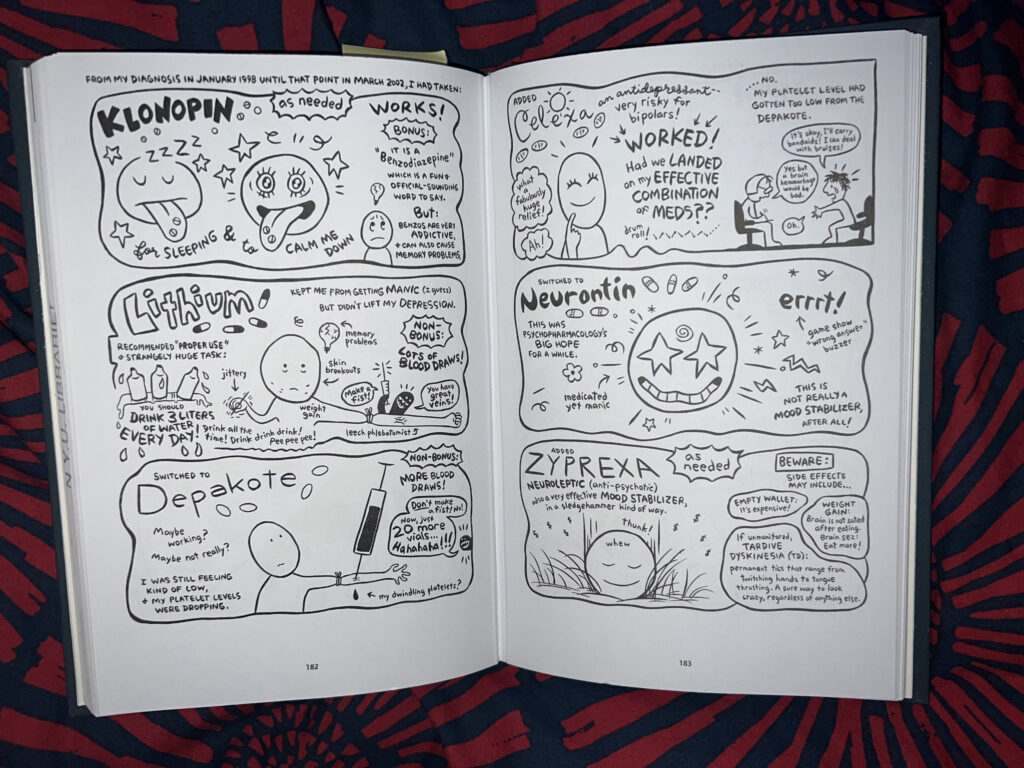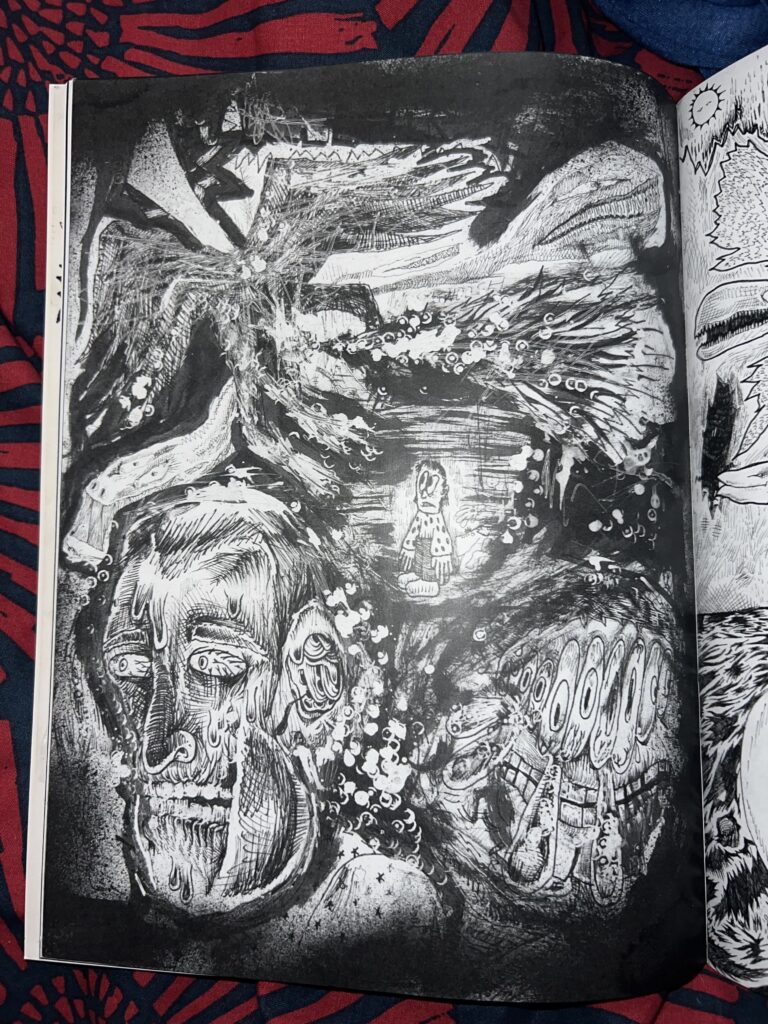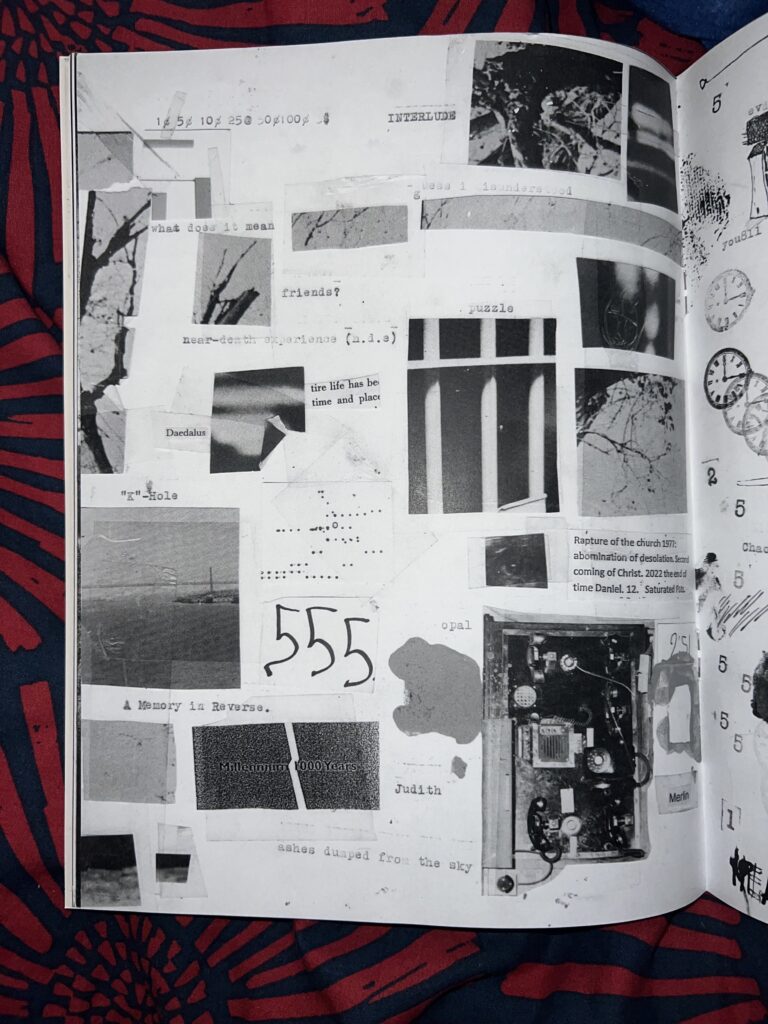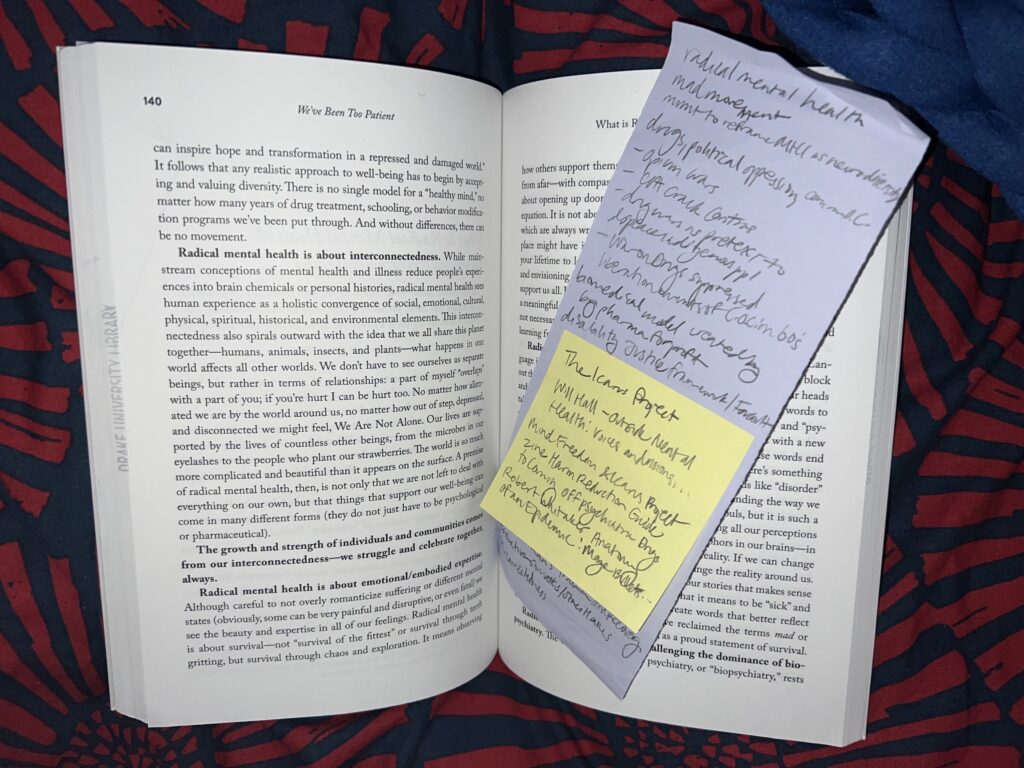This past month I finalized my summer reading list and began engaging with some texts and artworks. I watched All The Beauty and The Bloodshed, the HBO documentary about Nan Goldin and the opioid epidemic. I knew Goldin for her photography, but I wasn’t familiar with her activism work, and the visuals of the documentary were pretty striking. I love this film’s approach to amalgamating art and activism, because it felt very human-centered and represented sensitive populations without exploitation. The scope of the documentary spanned from those affected in the ongoing opioid crisis to the AIDS epidemic of the late 20th century and its effects on the New York underground scene Goldin photographed. While bridging these two distinct histories, the film did not sensationalize human stories or melodramatize deaths, which was a tonal approach I really appreciated and aim to carry into my own work. The use of Goldin’s slideshows throughout the documentary, as well as the physical ephemera used by the activism group PAIN, gave me some visual ideas for my own comic project. The doc is available to stream on MAX, and here is the trailer for anyone interested!
I also read Dr. Carl Hart’s book Drug Use for Grown Ups: Chasing Liberty in the Land of Fear. Hart’s take on journalism diluting already biased research to the extent that the public remains grossly misinformed on illicit substances reminded me of how mental health research is sensationalized and misrepresented to the public. Journalistically-propagated, psychiatric-forward mental health myths, like depression being caused by “chemical imbalances”, serve to disempower people with mental health issues under the biomedical model. America’s war on drugs propaganda machine has a lot in common with its mental health industrial complex, especially given the proliferation of direct-to-consumer pharmaceutical advertising in the United States. The book also drew my attention to some of my own misconceptions about substances, in particular the chapter on PCP and its similarity to ketamine, and the ramifications of these widespread misconceptions. Considering Dr. Hart’s former affiliation with NIDA, it’s pretty significant that his perspective on substance use changed so drastically over the course of his career. I was very impressed by this book and surprised it hasn’t made greater waves. Definitely recommend everybody give it a read! It’s also available as an audiobook through NYPL!
I also read Ellen Forney’s Marbles, which was underwhelming, though still an entertaining read. Throughout the memoir, the author resists medication and its perceived alterations to her creativity, while also proclaiming over and over again the permanence of her bipolar condition and need for lifelong medication. Forney seems trapped between extreme narratives, unable to reconcile the emphasis that the pharmaceutical industry, psychiatry, and society at large place on diagnostic labels. While wrestling with this disruption to her own identity, Forney willingly internalizes the diagnostic language of the biomedical model. At times she romanticizes her bipolar diagnosis as a badge of honor aligning her with other great tortured artists. I found this disconcerting to say the least. Forney’s attitude towards the bipolar label negate the book’s few glancing and topical anti-psychiatry takes. I did like the style and setup of many of the illustrations, and Forney’s brief discussion of her relationship with artmaking during her depressive episodes.

I read a shorter comic, Floyd Tangeman’s Miasma Myopia, and I’m a big fan of Tangeman’s detailed spreads and multimedia approach to comic making. The visual play and risk in this book inspires me and gives me some ideas for my own comic project.


Finally, I read We’ve Been Too Patient: Voices from Radical Mental Health, which pointed me in the direction of many more topics and texts to research and engage with. A lot of chapters in the book engage mutual aid in mental health, which I’m excited to learn more about.

